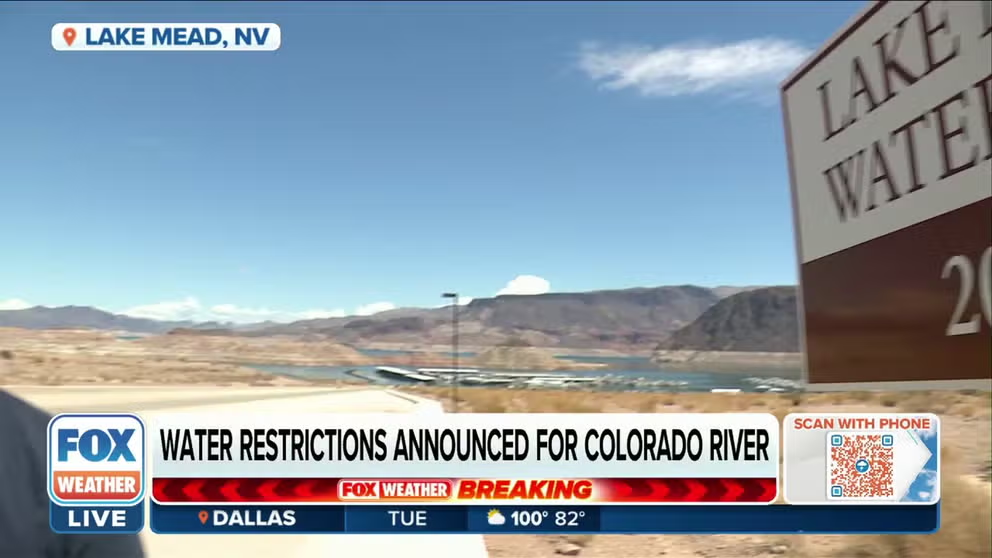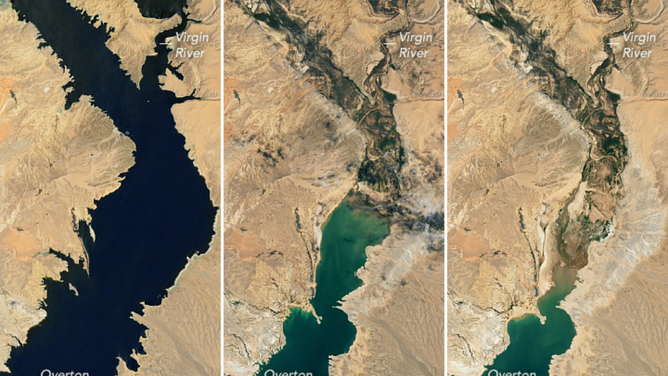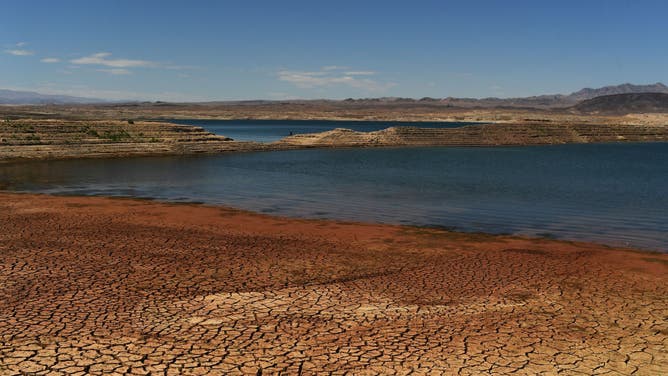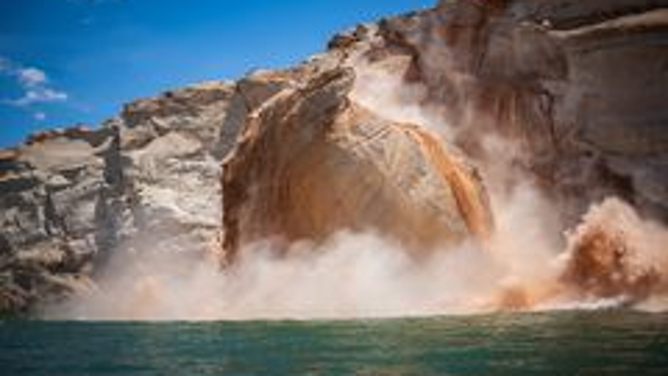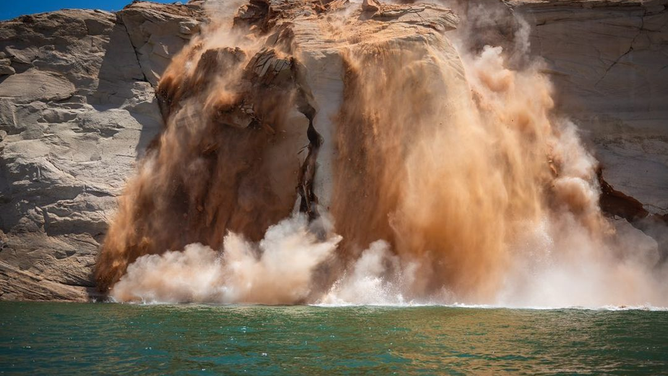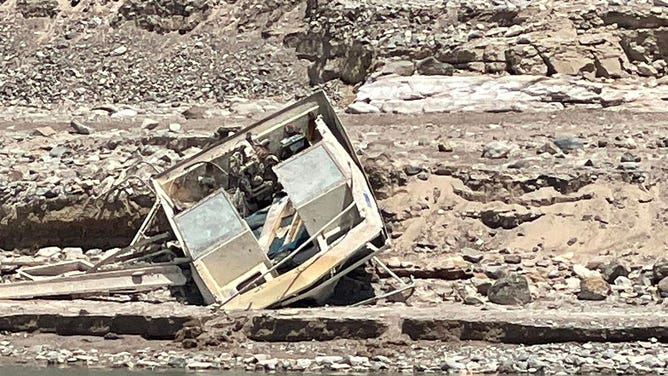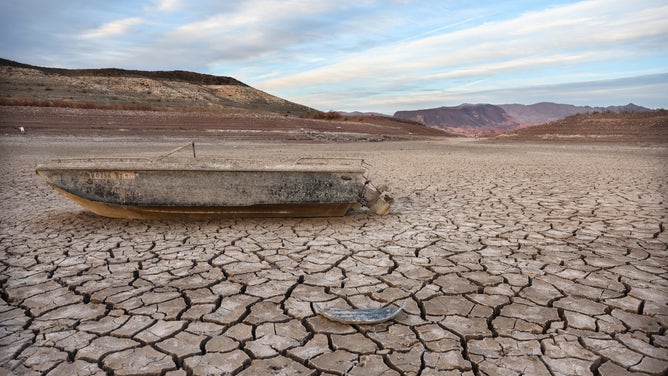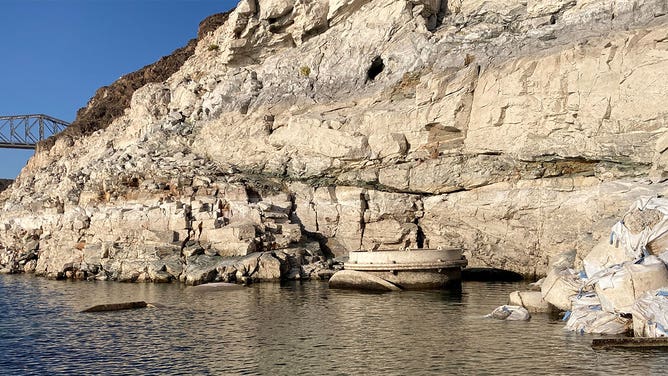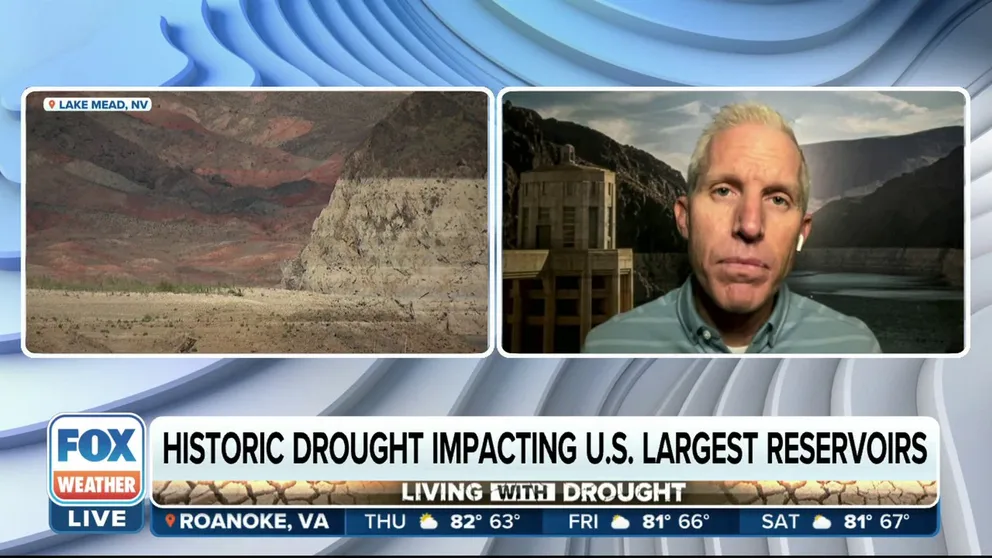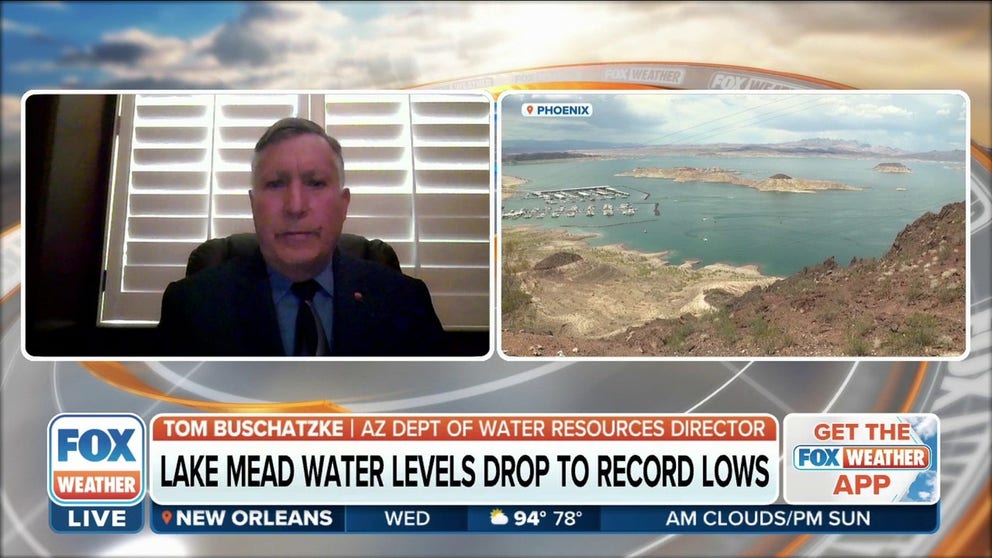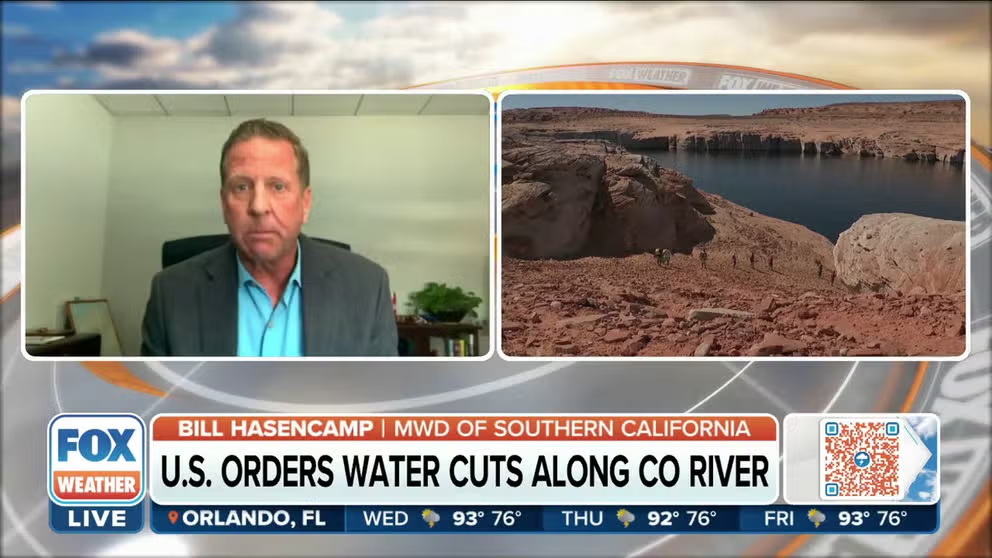Water cuts ordered along Colorado River in response to drought crisis
The Department of Interior announced a plan to improve and protect the Colorado River System. Downstream releases from Glen Canyon and Hoover Dams, which created Lakes Powell and Mead, will be reduced again in 2023 due to declining reservoir levels.
Low water levels on Lake Mead, Lake Powell force new water restrictions
FOX Weather correspondent Max Gorden discusses plans for a reduction of the flow of water down the Colorado River due to the continued megadrought.
New mandatory water cuts were issued Tuesday along the Colorado River as water levels at important reservoirs continue to linger around all-time lows.
The Department of Interior announced a plan to improve and protect the Colorado River System, stating that they will operate in a Tier 2 shortage for the first time. Downstream releases from Glen Canyon and Hoover Dams, which created Lakes Powell and Mead, will be reduced again in 2023 due to declining reservoir levels.
"Every sector in every state has a responsibility to ensure that water is used with maximum efficiency. In order to avoid a catastrophic collapse of the Colorado River System and a future of uncertainty and conflict, water use in the Basin must be reduced," said Assistant Secretary for Water and Science Tanya Trujillo. "The Interior Department is employing prompt and responsive actions and investments to ensure the entire Colorado River Basin can function and support all who rely on it."
This comes after Lake Mead and Lake Powell continue to reach record lows due to climate change. A megadrought and an increase in consumption from Lake Mead caused water levels to drop to an 80-year low.
"The worsening drought crisis impacting the Colorado River Basin is driven by the effects of climate change, including extreme heat and low precipitation. In turn, severe drought conditions exacerbate wildfire risk and ecosystems disruption, increasing the stress on communities and our landscapes," said Deputy Secretary Tommy Beaudreau.
Nevada prepared to make additional water cuts: Water company spokesperson
Southern Nevada Water Authority Outreach Manager Bronson Mack says it is the responsibility of 40 million Americans depending upon the Colorado River to adapt to the new rules and become more water efficient.
The Bureau of Reclamation said that the 23 years of drought and low amounts of runoff have resulted in historically low lake levels at Lake Mead and Lake Powell. Therefore, the water released down the Colorado River will be reduced in 2023.
What kind of water cuts will be in place?
More than 25 million people across several western states rely on the massive reservoir for water and electricity.
As the megadrought continues, Nevada and Arizona will be limited in the amount they can draw from the Colorado River.
The reductions represent Arizona and Nevada's second year of additional shortage declarations.
Drought-stricken Arizona to face steepest Colorado River supply cuts
Arizona is set to lose the most — 592,000 acre-feet, or 21%, of its annual allotment fro, the Colorado River in this round of cuts. Tom Buschatzke, Arizona Department of Water Resources Director, explains what this all means.
The Department of Interior implemented these changes to the Lower Basin States and Mexico effective Jan. 1, 2023:
- Arizona: 592,000 acre-feet, which is approximately 21% of the state's annual apportionment
- Nevada: 25,000 acre-feet, which is 8% of the state's annual apportionment
- California: Supply will not be cut
- Mexico: 104,000 acre-feet, which is approximately 7% of the country's annual allotment
- There is no required water savings contribution for California in 2023 under this operating condition.
Previous water restrictions implemented in May 2022 provided approximately 1 million acre-feet of additional water to help protect water levels at Lake Powell.
"Building on these important responsive actions, Reclamation will begin efforts to modify low reservoir operations at both Lake Powell and Lake Mead to be prepared to reduce releases from these reservoirs in 2024 to address continued drought and low runoff conditions in the Basin," the Department of Interior said in a statement Tuesday.
MORE HUMAN REMAINS FOUND AT LAKE MEAD AS BASIN SEES BENEFICIAL MONSOON RAINS
The Bureau of Reclamation will begin efforts to modify low reservoir operations at Lake Powell and Lake Mead to be prepared to reduce releases from these reservoirs in 2024 to address continued drought and low runoff conditions in the Basin.
Lake Mead and Lake Powell water levels
A 24-month study projected that by 2023, Lake Powell's water surface elevation to be 3,521.84 feet – 178 feet below the full pool (3,700 feet) and 32 feet above the minimum power pool (3,490 feet).
For Lake Mead, the study determined the operating determination elevation to be 1,047.61 feet. The projected elevation of 1,047.61 feet reflects a Level 2a Shortage Condition and required shortage reductions and water savings contribution for the Lower Basin States and Mexico.
Arizona and Nevada getting brunt of Colorado River water cuts, CA not included
Bill Hasencamp, Manager of Colorado River Resources at Metropolitan Water District of Southern California, talks about how the Colorado River water cuts will impact Southern California, even though they're not included in the cuts.
Data from the Bureau of Reclamation shows Lake Mead's stage near the Hoover Dam has recovered by about two feet in early August.
A significant monsoon season in the Southwest has provided some relief along the basin and waterways that lead into the Colorado River system. Still, the Bureau of Reclamation says there is a long way to go to improve water levels.
"At current elevation, an increase in 1 foot of elevation at Lake Mead requires approximately 68,000 acre-feet of water. While the amount of precipitation received in the lower basin and from tributary inflows helps, rainfall from recent monsoons, alone, isn't enough to offset the decades-long reservoir declines," Public Affairs Office Michelle Helms said.
Most of its water sources come from melting snowpack from the Rocky Mountains as it flows from the Upper Basin.
